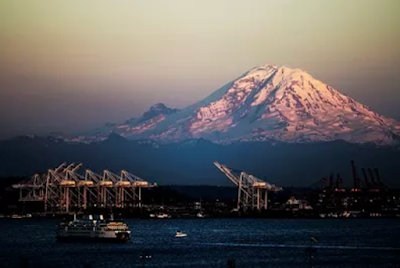 |
| Tom and Pat Gish, about 20 years ago |
Nominations for the Gish Award may be made at any time, but the deadline for new nominations to be considered for this year's award is April 15. To make a nomination, send a detailed letter with some documentation explaining how the nominee shows the kind of courage, tenacity and integrity that Tom and Pat Gish demonstrated at their weekly newspaper in the Central Appalachian coalfield. They withstood advertiser boycotts, business competition, declining population, personal attacks, and even the burning of their office to give their readers the kind of journalism often lacking in rural areas, and were the first winners of the award named for them. Tom died in 2008 and Pat in 2014; their son Ben is editor and publisher of the Eagle and serves on the award selection committee.
Additional documentation may be submitted after the nomination, and may be requested or required. Send your nominating letter, initial documentation and any questions to Institute Director Benjy Hamm at benjy.hamm@uky.edu.
The Institute seeks nominations that measure up, at least in major respects, to the records of the Gishes and other previous winners. Other winners have been the Ezzell family of The Canadian Record in the Texas panhandle; Jim Prince and Stanley Dearman, current and late publishers of The Neshoba Democrat in Philadelphia, Miss.; Samantha Swindler of The Oregonian for her work at The Times-Tribune in Corbin, Ky., and Jacksonville Daily Progress in Texas; Stanley Nelson and the Concordia Sentinel in Ferriday, La.; Jonathan and Susan Austin of the Yancey County News in North Carolina; the late Landon Wills of the McLean County News in Kentucky; the Trapp family of the Rio Grande Sun in northern New Mexico; Ivan Foley of the Platte County Landmark in northwestern Missouri; the Cullen family of the Storm Lake Times-Pilot in northwest Iowa; and Les Zaitz of the Malheur Enterprise in eastern Oregon. In 2019, the award went to three reporters whose outstanding careers revealed much about the coal industry in Central Appalachia: Howard Berkes, retired from NPR; Ken Ward Jr., then with the Charleston Gazette-Mail; and his mentor at the Gazette, the late Paul Nyden. In 2020 the award went to the late Tim Crews of the Sacramento Valley Mirror; in 2021 to the Thompson-High Family of The News Reporter and the Border Belt Independent in Whiteville, N.C.; in 2022 to Ellen Kreth and the Madison County Record of Huntsville, Ark.; and in 2023 to Craig Garnett of the Uvalde Leader-News in Texas.














